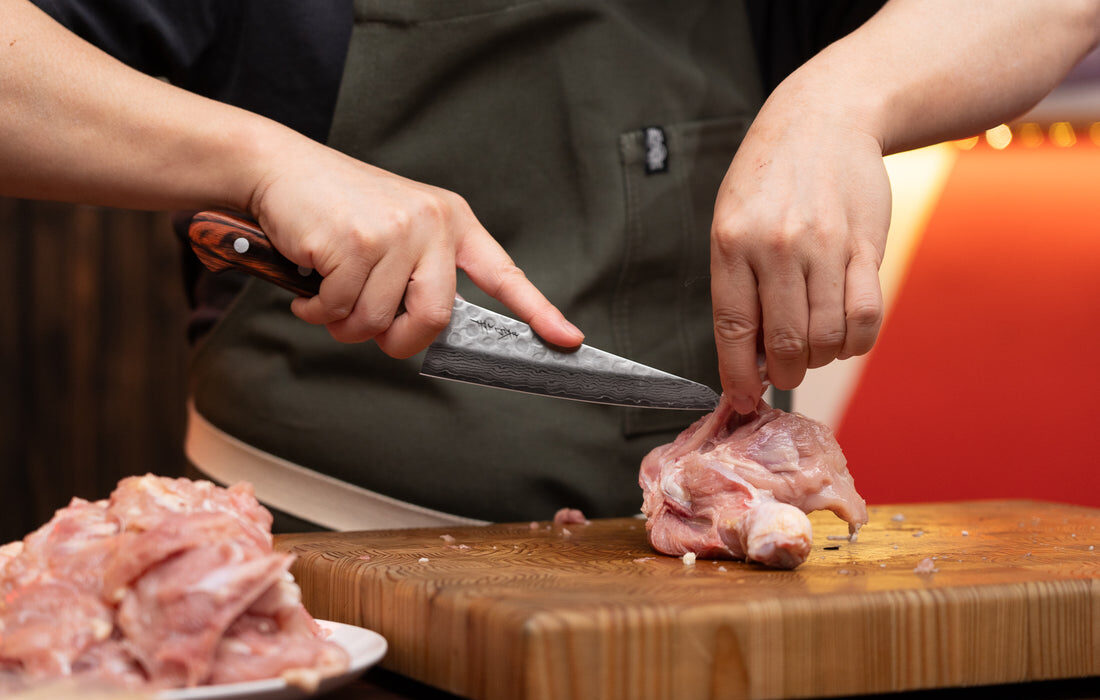When it comes to crafting high-quality kitchen tools, the composition of German knife steel is a subject that garners significant attention. Renowned for its robustness and durability, German knives are a staple in both professional and home kitchens. Understanding what makes these knives stand out requires a dive into the intricate details of their steel composition.
German knives are famous for their resilience and edge retention. This is primarily due to the unique blend of elements used in their steel, which includes carbon, chromium, molybdenum, and vanadium. Each of these elements plays a crucial role in enhancing the knife’s overall performance, making it a preferred choice for kitchen professionals.

The Role of Carbon in German Knife Steel
Carbon is a vital component in all knife steels. In German knives, the carbon content is carefully balanced to improve hardness and edge retention without making the steel too brittle. This balance is what gives German knives their ability to maintain a sharp edge over prolonged use.
Chromium: Adding Corrosion Resistance
Chromium is another key element in the composition of German knife steel. It enhances the steel’s resistance to rust and corrosion, which is crucial for kitchen environments where exposure to moisture is frequent. The presence of chromium ensures that German knives remain reliable and robust through various cooking tasks.
Molybdenum and Vanadium: Enhancing Performance
Molybdenum and vanadium are added to the steel to further enhance its toughness and wear resistance. These elements contribute to the knife’s longevity, ensuring that it can withstand the rigors of daily use without losing its efficiency.
Comparing German and Other Knife Steels
While German knives are celebrated for their durability, it’s essential to compare them with other popular knife steels to fully appreciate their unique qualities. Japanese knives, for instance, often use harder steels that allow for sharper edges but may be more prone to chipping. German knives, with their balanced steel composition, offer a more forgiving and versatile tool for diverse culinary tasks.
The Manufacturing Process
The manufacturing process of German knives also plays a critical role in their final quality. Precision forging and tempering techniques are employed to optimize the steel’s properties, ensuring each knife meets high standards of craftsmanship and performance. This meticulous process is what distinguishes top German knife brands such as Zwilling and Wsthof.
Steel Hardness and Its Impact on Performance
The hardness of German knife steel, measured on the Rockwell scale, typically falls between 55 and 58 HRC. This range is ideal for maintaining a balance between sharpness and durability, allowing the knives to perform exceptionally well in various kitchen settings.
Knife Maintenance Tips
Maintaining the quality of German knives involves proper care and handling. Regular honing and occasional sharpening are necessary to keep the blade in peak condition. Additionally, it’s important to store knives safely to prevent damage and ensure their longevity. For more tips on knife care, you can visit Victorinox’s knife care guide.
The Popularity of German Knife Brands
Brands like Zwilling and Wsthof are synonymous with quality in the culinary world. Their commitment to excellence is reflected in the superior steel composition of German knives, which continues to set industry standards. The history of these brands is rich with innovation and tradition, making them a preferred choice for chefs and cooking enthusiasts alike. Learn more about the history of Zwilling knives.
Versatility in the Kitchen
German knives are known for their versatility, making them suitable for a wide range of culinary tasks. Whether you’re chopping vegetables or slicing through meat, the balanced composition of German knife steel allows for efficient and precise cutting.
Environmental Impact and Sustainability
The production of German knives also considers environmental sustainability. Many manufacturers are adopting eco-friendly practices to minimize their carbon footprint, ensuring that their knives not only deliver on performance but also adhere to environmental standards.
Choosing the Right German Knife
When selecting a German knife, it’s essential to consider the specific needs of your kitchen. Factors such as the knife’s size, shape, and intended use will influence your choice. Beginners may benefit from exploring German knife sets for beginners.
Future Trends in Knife Steel Technology
As technology advances, the future of knife steel composition holds exciting possibilities. Innovations in metallurgy and manufacturing techniques continue to push the boundaries of what is possible, promising even more durable and efficient kitchen tools.

FAQ
What makes German knife steel different?
German knife steel is known for its balanced composition, which includes carbon, chromium, molybdenum, and vanadium. This combination results in a durable, corrosion-resistant, and versatile kitchen tool.
How do I maintain the sharpness of my German knife?
Regular honing and occasional sharpening are recommended to maintain the sharpness of your German knife. Additionally, proper storage and careful handling will help preserve its quality.
Are German knives suitable for beginners?
Yes, German knives are versatile and forgiving, making them an excellent choice for beginners. They offer a balance of sharpness and durability that’s ideal for learning various culinary skills.
This article contains affiliate links. We may earn a commission at no extra cost to you.


